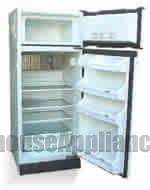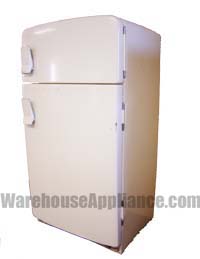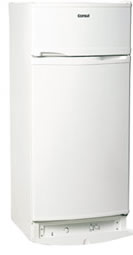 Advantages of a Propane Refrigerator | History of Propane Refrigerators | Function of Propane Refrigerators
Advantages of a Propane Refrigerator | History of Propane Refrigerators | Function of Propane Refrigerators
Compare Propane Refrigerators
When doing propane fridge comparisons, in times past, the SERVEL built in the 1930’s -1950’s lasted for generations due to the fact that their design was made with the intent to last a long time. In later times, the refrigeration units have become more streamline with less heavy duty materials for lighter weight and still have quality performance. An average propane gas refrigerator today will last approx. 15 yrs. By that time the box will be looking quite tattered under normal use.
 The older style SERVELS were much heavier in weight than the newer style ammonia cooling systems are. These older units weighed as much as 400- 500 lbs. The newer refrigerators weight anywhere from 150-275 lbs. This again is due to lighter materials and higher quality workmanship. There is also a larger amount of selection available on the market to choose from today compared to 50 years ago.
The older style SERVELS were much heavier in weight than the newer style ammonia cooling systems are. These older units weighed as much as 400- 500 lbs. The newer refrigerators weight anywhere from 150-275 lbs. This again is due to lighter materials and higher quality workmanship. There is also a larger amount of selection available on the market to choose from today compared to 50 years ago.
When SERVEL in Evansville, IN sold out the business to ELECTROLUX, ELECTROLUX then sold it to DOMETIC Corp. in Sweden. The SERVEL name was still being used by DOMETIC until 2005. This refrigerator is now called a DOMETIC refrigerator which is still being produced by DOMETIC.
Some of the newer propane refrigerators for backwoods and off the grid living that are on the market today are ; DIAMOND, EZ-FREEZE, DOMETIC, CONSUL, and DANBY. These are all ammonia absorption systems that run off of either, propane, natural gas, or butane burners. The DOMETIC refrigerator is the only one that is still available with kerosene
The CONSUL and DANBY refrigerators are manufactured in BRAZIL S.A. Both made by the same company.
The DIAMOND and EZ-FREEZE refrigerators are manufactured in the USA. by separate independent companies.

There are times in hard, heavy use that an ammonia absorption refrigerator will block up in the boiler section [perk tube] in 5-10 years. When this happens, the refrigerator can be recharged again. This is done by first removing the ammonia solution and then removing the blockage in the perk tube. When the unit is repaired and welded together, the unit is recharged again with new solution.
EFFICIENCY

The amount of improvements that have been made in the newer style refrigerators [built from the mid 1970’s – today] by improved performance in gas usage is credited wholly to the improved engineering on absorption cooling systems
VENTING
The older SERVELS with their larger burners have been noted to burn much more dirty than the modern day refrigerators do. Since the modern-day propane refrigerators use only ½ the amount of fuel to operate, they are also noted to burn much cleaner. These unburned gas fumes are what they call carbon monoxide [CO]gas. When too much of this gas is emitted into a room, it will create CO poisoning if this level of CO is too high.
The older SERVELS built in the 1930’s – 1950’s were noted to emit up to 1500 parts per million [PPM] of CO gas fumes at the exhaust vent. If this would be emitted into a room 10′-20′, it would emit approx. 300-400 PPM of CO into the building [this amount varies depending on the size of the room]. This amount of CO is in a danger zone for exposure. It is highly recommended to vent an older SERVEL because of this high level of CO emission. This is due mostly because of the the design of the burner setup. The older SERVELS are not legal to operate in CANADA and are discouraged to be used by the USA. The government of United States has set up a system to reclaim these SERVEL refrigerators by paying the owner $100 + disposal costs just to get them off of the market. Many people loved the longevity of these refrigerators that have been used for 70 some years and find it hard to part with these units and therefore, creating more hazard for themselves. This is why the government wants to omit these refrigerators. Any older style SERVEL refrigerators that are still in use today can be disposed by calling, SERVEL ACTION COMMITTEE at 1-800-782-7431.
Any propane refrigerator built in the 1980’s until current are much cleaner to operate. On the average, these refrigerators will omit 20-30 PPM of CO at the exhaust vent tube, which omits approx. .001 PPM of CO in a room. The allowable amount of PPM of CO permitted in a living area is 50 PPM . At this amount of CO in any given area , no one should ever need to worry about CO poisoning with a modern day propane refrigerator.
A propane refrigerator does not generally need to be vented to the outside.
If a homeowner is to box in his propane refrigerator in a kitchen with cabinets built over the top of the refrigerator and around the sides, it is always important to put a vent in the floor towards the back of the refrigerator and on the top of the refrigerator for ventilation so that heat can escape from the cooling system . If this is not done , a refrigerator will overheat, thus causing it to loose efficiency in cooling. Read more….





